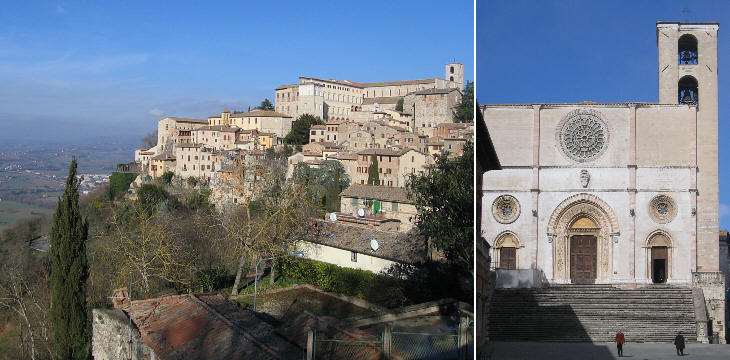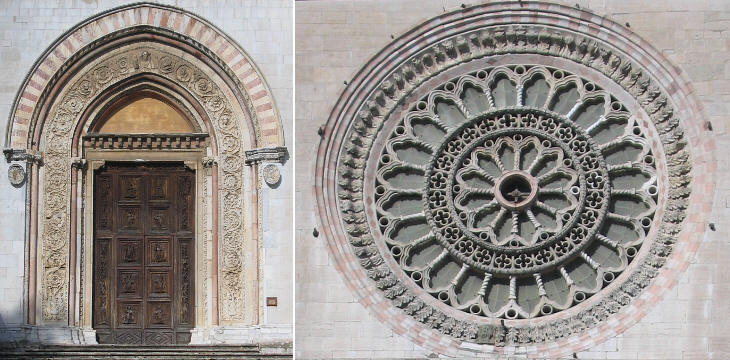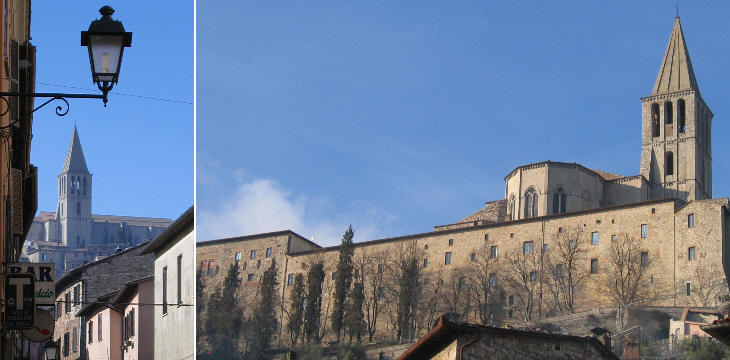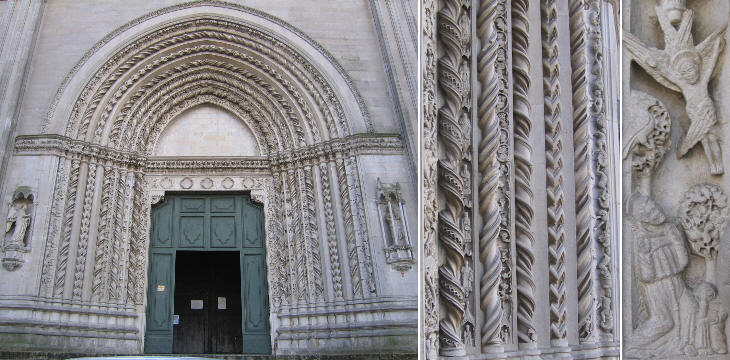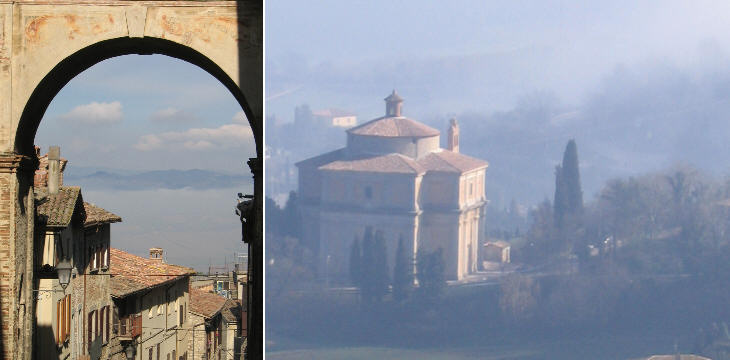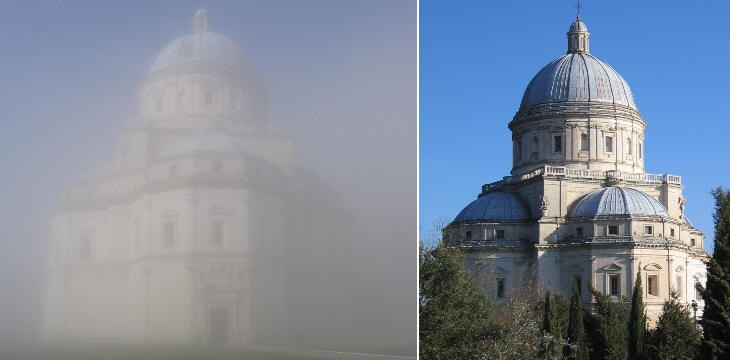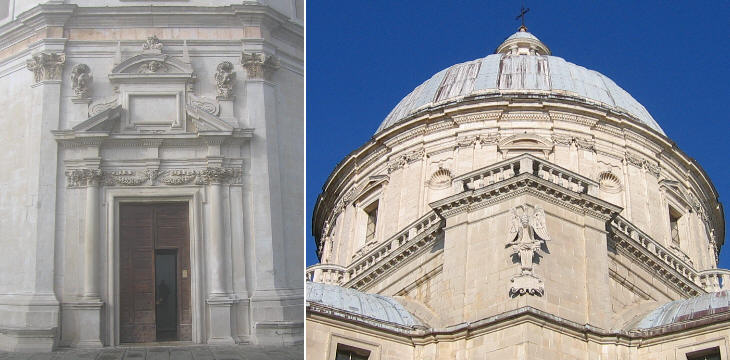  What's New! Detailed Sitemap All images © by Roberto Piperno, owner of the domain. Write to romapip@quipo.it. Text edited by Rosamie Moore. Page added in February 2008. |
Everyday a train leaves Termini: first stop: Orte; second stop: Narni; third stop Terni; fourth stop Cesi; fifth stop San Gemini/Acquasparta; sixth stop ... 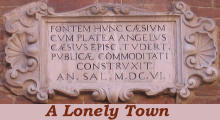 - Todi - part two: the churches - Todi - part two: the churches(inscription at Fonte Cesia) All the Italian city-states enrolled in a sort of competition to have the largest and finest Cathedral. This drive had more to do with civic pride than with religious fervour. The Florentine writer Giovanni Boccaccio (1313-75) in his Decameron portrayed his contemporaries as spirited and clever individuals who mocked priests and religious belief.
The Cathedral of Todi was built on one of the highest points of the hill, most likely above the foundations of a Roman building. It took two centuries (XIIth-XIVth) to complete the building which stands at the top of a high staircase as if it were an ancient temple.
The decoration is based on the use of white and pink stones: the latter ones came from Mt. Subasio near Assisi and they characterized most of the architecture of the region. The faēade was modified in the XVIth century with a new rose window. Apparently its design follows medieval patterns, but when it is compared with an older rose window it shows a more elaborate and elegant design (see for a comparison Assisi Cathedral rose window).
The inhabitants of Milan are referred to as those who lived all'ombra della Madonnina, in the shade of the small golden statue of the Virgin Mary which is placed on the highest spire of their Cathedral: this because (in the past) it could be seen from all over the city; the bell tower of S. Fortunato is for Todi what la Madonnina is for Milan. The large Franciscan church was built at the end of the XIIIth century above the foundations of the Etruscan acropolis.
The fine portal is a XVth century work which, similarly to the rose window of the Cathedral, follows a medieval pattern, but shows already the harmony of the Renaissance.
On a winter morning there is often fog in the Tiber Valley (see it near Monte Soratte). Even Todi which is located at 1,200 ft is covered by fog; when the heat of the sun dissolves the clouds the views over the valley and the isolated churches is particularly rewarding. Tempio del Crocifisso is a Greek cross church built at the end of the XVIth century.
You may be very close to S. Maria della Consolazione and yet be unable to see it; after a few minutes, similar to a miraculuos apparition, its imposing outline is bathed in sunshine.
The construction of S. Maria della Consolazione started at the beginning of the XVIth century when Cardinal Antonio Del Monte was governor of Todi. In his home town of Montepulciano he promoted the construction a large Greek cross church (S. Biagio) which shares many points in common with S. Maria della Consolazione. The church was completed in the second half of the century at the initiative of Bishop Angelo Cesi. At that time everybody thought that Basilica di S. Pietro (once completed) would have had a Greek cross shape, but in 1607 Pope Paul V modified the original design by making the eastern arm longer. Return to page one. 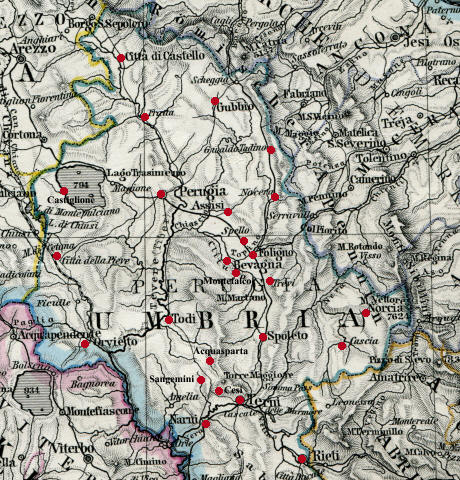
1864 clickable map of Umbria |
